Micro four thirds system for wildlife photography
Micro four thirds system for wildlife photography

Quick links
Why switch to Micro Four Thirds • What is a Micro Four Thirds Sensor • Advantages & Disadvantages
Best Camera Bodies for Wildlife Photography • Final thoughts
Pangolin Photo Host Janine Krayer is joined by top wildlife photographer (and OM systems shooter) Mark Buckler on the Chobe River in Botswana to discuss the pros and cons of a micro 4/3 camera system. In this blog, Mark will explain why he switched from Canon to OM (Olympus) and has never looked back.
Janine will discuss the pros and cons of this cropped sensor as well as the software and ergonomic features of the camera. At the end of this, we will share some suggestions as to what you should think of buying if you want to make the switch to a micro 4/3 camera system for wildlife photography.
If you’d like to watch the interview instead, check out the video below.

Janine: A micro four third system simply refers to the size of the sensor that is within the camera. It is for one, a different aspect ratio, namely four thirds instead of two by three. But most importantly, it is much smaller than our average full-frame sensor and even the various crop sensors that we have on the market.
If you take the diagonal of the sensor, it will effectively be half as long as your full frame. So when your sensor only covers basically a quarter of the entire surface area or half of the diagonal, it will look at a smaller area of the entire picture. This means that at the end you have a phenomenal amount of lens magnification.
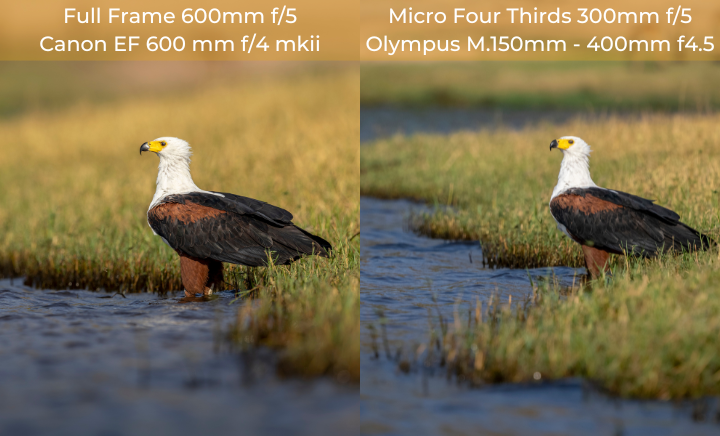
So we have a two-times crop at our hands and we can get double as far with our focal length. That is fantastic, but it also affects the way the light is being processed on that sensor. So what does this mean for wildlife photography? Mark, you’ve been shooting Canon for the previous 17 years which honestly shows a lot of brand loyalty so why the change to OM System (Olympus)?
Mark: I shot Canon for 17 years and then 3 years ago I did switch to the micro 4/3 camera system of Olympus, which is now known as OM System. The biggest change for me was due to the fact that mirrorless was definitely going to be the future.
And in 2015 when it came to mirrorless cameras Olympus was ahead of the curve with their autofocus ability, whereas Cannon, in my opinion, was lagging behind with autofocus on their mirrorless cameras. Olympus offered me the chance to try out their equipment for three months, and the short story is within one month I sent the equipment back and replaced all of my Canon gear with the equivalent of Olympus gear.
Which looked like this:
○ Canon 1 Dxii x 2 to Olymus E-M1x x2
○ Canon EF 200-400mm x 1.4X to Olympus ED 40-150mm f/2.8
○ Canon EF 600mm f/4 to Olympus ED 300mm f/4
○ Canon EF 70-200mm f/2.8 to Olympus 40-150mm f/2.8
Janine: Fantastic. I’m going to play devil’s advocate on this one and want to dive a little bit deeper into the advantages and disadvantages that these micro four third sensors bring along with them.
Size vs. Reach
Janine: The smaller size sensor doesn’t just allow for a smaller camera body, but as mentioned before, gives you a two times crop and therefore a lot more focal range. So in the field, how important does that become for a wildlife photographer?
Mark: The biggest advantage of a micro four third system like Olympus is its portability. The smaller size sensor allows for a smaller camera body, but it also allows for much smaller lenses to be placed on the camera body. I can handhold everything. The image stabilization is fantastic, and being able to just change angles slightly without having to move a tripod and just being able to handhold in the field is so essential to a wildlife photographer.
There have been some pretty significant advances making full frame gear a little bit lighter but also balancing the lens a little bit better with the camera body. Full-frame lenses can be handheld for short periods of time. But for handholding, all day, like many wildlife photographers do I think the micro four third system is truly much more compact.
Janine: And how great is it to have that extra focal range a wildlife photographer needs?
Mark: Having extra reach is critical! Not only is it important to give our subject more space and make sure we don’t affect their behaviour but also having more focal length is (for most of the time) the best option.

An example of reach by Mark Buckler
Olympus micro 4/3 price
Mark: The Olympus gear costs much less because of the use of fewer materials. As an example, a popular wildlife lens is a 600mm f/4 lens. In a full-frame system, those lenses run somewhere around $13,000. The equivalent in an Olympus lens would be 300mm with the two x crop factor becoming a 600mm and staying an f/4. That lens is about $2,500.
So for about $2,000, you have a couple of options for flagship cameras with Olympus, which again is about one-third the price.
Janine: That doesn’t speak for the quality and functionality of the camera? One often thinks the higher the price, the better the gear.
Mark: Although that is a popular belief, that’s just not always the case. I make my living with my photography profession and I couldn’t be more pleased with the Olympus gear.
Noteworthy features of the micro 4:3 cameras
Mark: Without a doubt, Pro Capture. It makes capturing unpredictable events much easier to get. The way that pro capture works is that when you press your shutter button and engage the auto focus, it starts storing a preset number of images for a preset amount of time into your buffer memory, and doesn’t write it immediately to your memory card.Below are some examples of Mark’s pro capture images.
That just kind of keeps a rolling loop as long as you press that shutter button down, and then as soon as you press that shutter button, complete the camera takes those images that are currently in the buffer and writes them to your memory card and then continues to shoot on whatever your subject may be doing. Simply put, it makes up whatever delay you’ve had in your own reaction. Another thing to have a look at is live composite and live ND which is great for nature photographers.
Disadvantages of a micro 4/3 system
Low Light Performance

Janine: We can all agree that in wildlife photography we require rather fast shutter speeds for a variety of reasons. Capturing movement is our number one priority, and at the same time, we often operate in very low light.
On a smaller sensor of a micro four third system, all our pixels get a little bit squished together and have to become smaller so that they can fit, that causes a different treatment of the light. Is it possible to reach these shutter speeds? What does the ISO do on a micro four third sensor and is it really a problem?
Mark: Yes. Having smaller pixels is going to essentially increase the noise in your images, especially at higher ISOs. And so that’s something you just have to be willing to accept when you decide you might want to shoot with a micro four third system. Noise doesn’t bother me all that much. Yes, I would like to minimize it, but also the real truth is, the technology inside the camera has gotten better and the noise levels are coming down and being much more acceptable to the point where even shooting at ISO 6,400 or higher is just not objectionable to me.
Additionally, in the last couple of years, software that reduces noise in your processing in your post-production work has become really good.
An example: Below are two images shot with Mark’s OM-1 and Janine’s Canon R3. Both are shot on ISO 6,400 which is a typical threshold for many wildlife photographers, and you can see a difference between the two images. Make of them what you will but as Janine says, as wildlife photographers, we’re story tellers and for that, it’s about getting the image and not worrying so much about the noise!

Ergonomics
Mark: The one thing I do miss are the bigger cameras. The Olympus camera bodies are significantly smaller. Most people are led to believe that mirrorless camera systems are smaller by nature, but that only really becomes true with micro four thirds.
Janine: So the micro four third system also has a bit of a reputation of an enthusiast camera, something that’s easy to take on holiday. Is that something that bothers you?
Mark: It doesn’t bother me personally. As a wildlife photographer at a professional level, it’s important to me to have gear that is high quality and lives up to professional standards. The Olympus gear sometimes does have a reputation of being an enthusiast system. But as you can see by some of the images below that both the image and gear quality is highly professional. The gear is:
○ Rugged
○ Weather Sealed
○ High performing
Bokeh
The micro four third systems tend to have a much larger depth of field. Janine explains further. If Mark shoots effectively a 400mm lens at a 4.5, he gets 800mm out of it. But it will look like the depth of a 400mm lens. So some people say an f/4 essentially looks like an f/8. Whether that is good or bad is very dependent on the specific wildlife situation that you are busy photographing. Janine personally prefers a smaller f-number and shallow depth of field as it really gives a beautiful blurred bokeh feel.
Mark: So as photographers, we always make compromises when we’re out shooting. In the case of this increased depth of fields that you get with a micro four third system, it is definitely something that I’m concerned about. It is something that I think I can work with. It just depends on the particular situation. Having this increased depth of field is, is also very much dependent upon the distance that I am from my subject, and the background is away from the subject.
If my background is very close to behind my subject, then I do have a much harder time throwing that background out of focus. That is bothersome at times. Again it’s a compromise and it’s something that I’m willing to accept because of the additional benefits that we’ve talked about.
Janine: In turn, you have a much easier time going low because your gear is so much lighter in a lower angle, always gives you a better background.
Janine’s final thoughts: There are outstanding points, both on the advantage side and the disadvantage side for micro four thirds. For me personally, though, I never really had an issue traveling with my camera gear. My priority is to get the best low light performing camera out there, not because I’m so finicky with noise, but I would like to be able to push my ISO to 20, 25,000 if necessary. I believe with a full frame sensor, you can also increase your depth of field for some storytelling, but you have the chance to bring your depth of field down to create a nice bokeh. At the same time, I hope that maybe other brands will pick up some of Olympus’s cool features in the future.
Mark: So the flagship camera when it comes to wildlife photography for the Olympus system has been for quite a while the Olympus e-m1 x. It’s a fabulous camera system with a built-in battery grip, and offers great features, many of which we’ve discussed. However, recently the new OM system, formerly Olympus introduced its first camera, the OM-1.
It is also a professional-level camera with great features like subject tracking at a reasonable price point.
Best affordable micro four thirds camera for wildlife photography
Mark: I would recommend either the EM-1 Mark III or E-M5 Mark III from Olympus. Both of those are in the mid to low $1,000 range and offer great functionality but maybe not at quite the high end of the other cameras. For wildlife photography specifically, I would suggest the EM-1 Mark III because it has a higher frame rate and auto focus.
What about micro four thirds lenses?
Mark: In my opinion, Olympus probably has the best wildlife lens on the market right now, they offer a 150mm – 400mm zoom lens which is equivalent in a full frame of 300mm to 800mm at a fixed f/4.5, which is amazing. Additionally, it’s a very compact lens with a built-in teleconverter that allows you to essentially get a 400mm to 1000mm in a full frame equivalent at f/5.6. It’s incredibly sharp as great image stabilization, but overall it is, I think, one of the best lenses for a wildlife photographer on the planet.

Both Janine and Mark laugh with this tall order! But overall, the OM System is definitely something to consider. They agree that no matter what gear they decide to use, they both end up with great results and it’s about compromise and priorities and just getting out there and having fun.
Hopefully, this blog helped share some insight on moving to a micro four third system. At the end, it remains a personal choice and depends on:
○ How much you shoot
○ What animals you shoot
○ How much you travel
○ How much you’re allowed to carry when travelling
○ What focal ranges you need on average when you are shooting
○ How strong you are
○ What your priorities are
If you’d like to visit Botswana and test out your gear please check out our packages below and we can welcome you here soon.

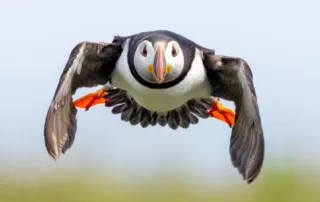
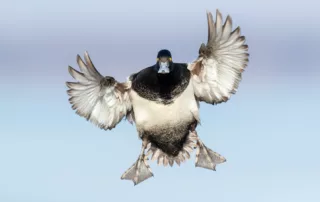
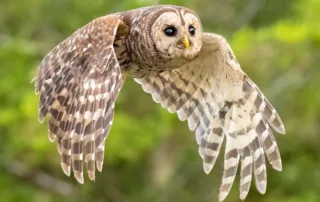
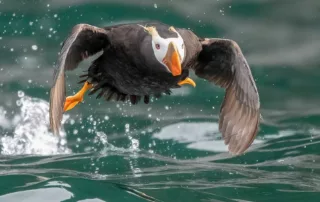
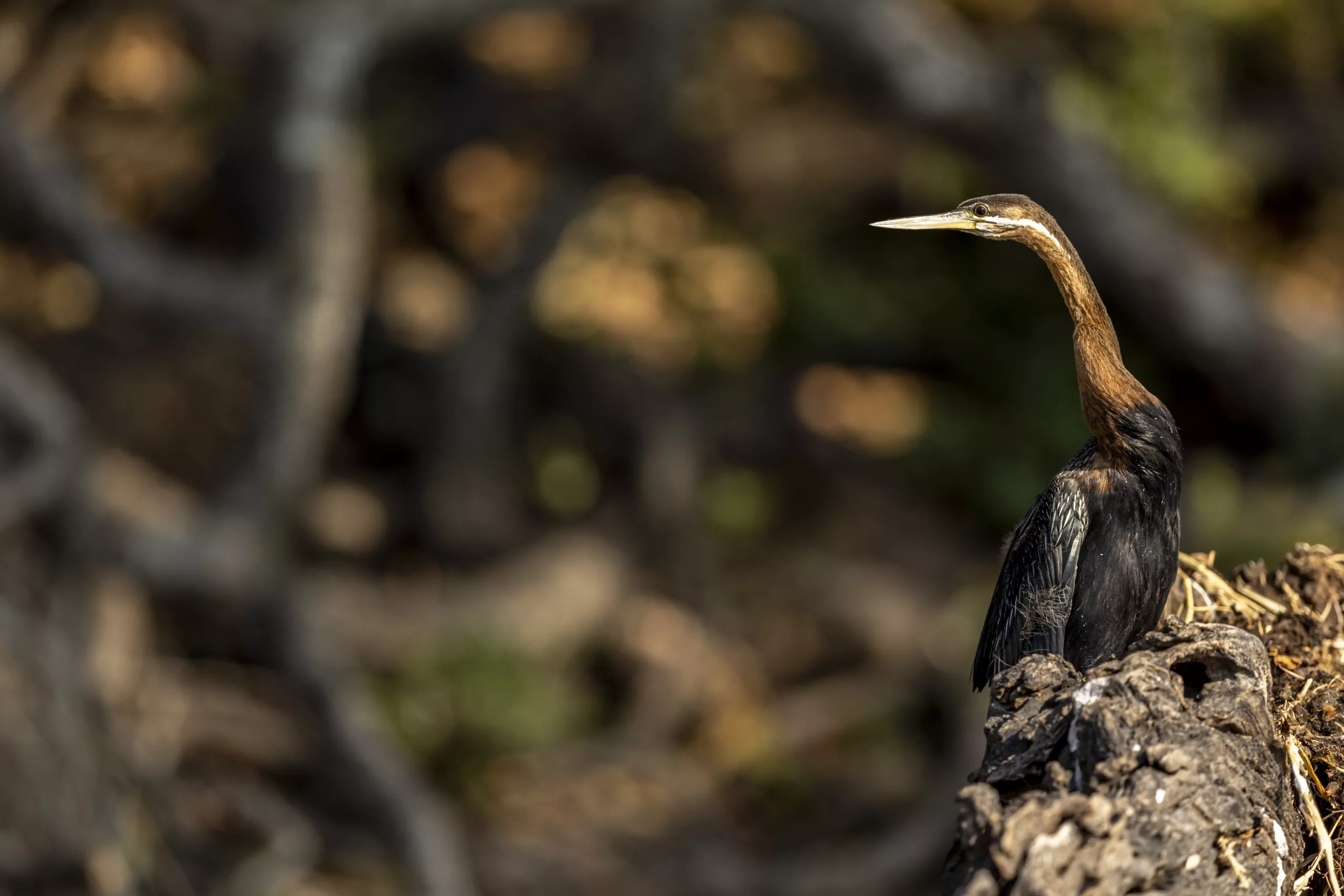
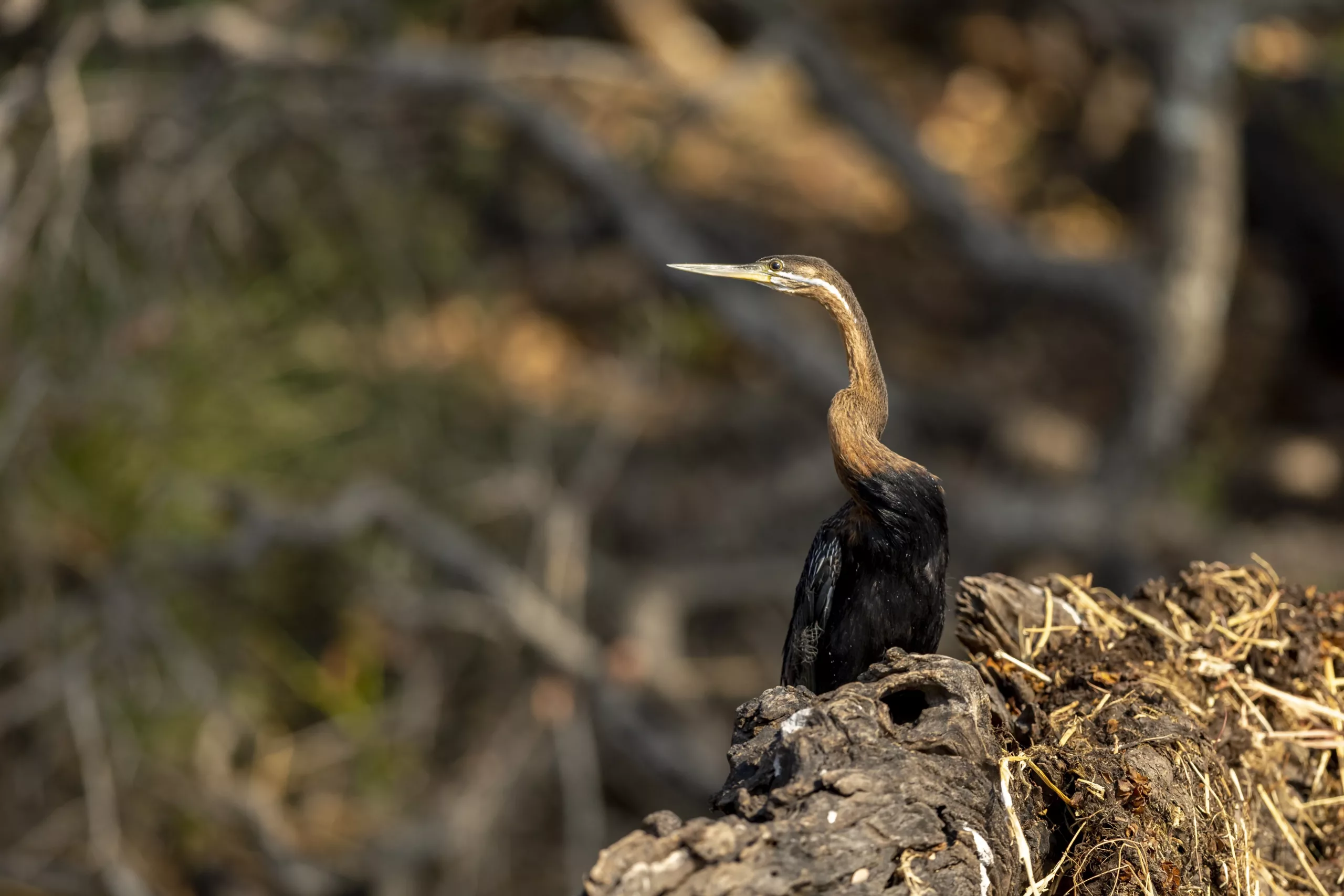
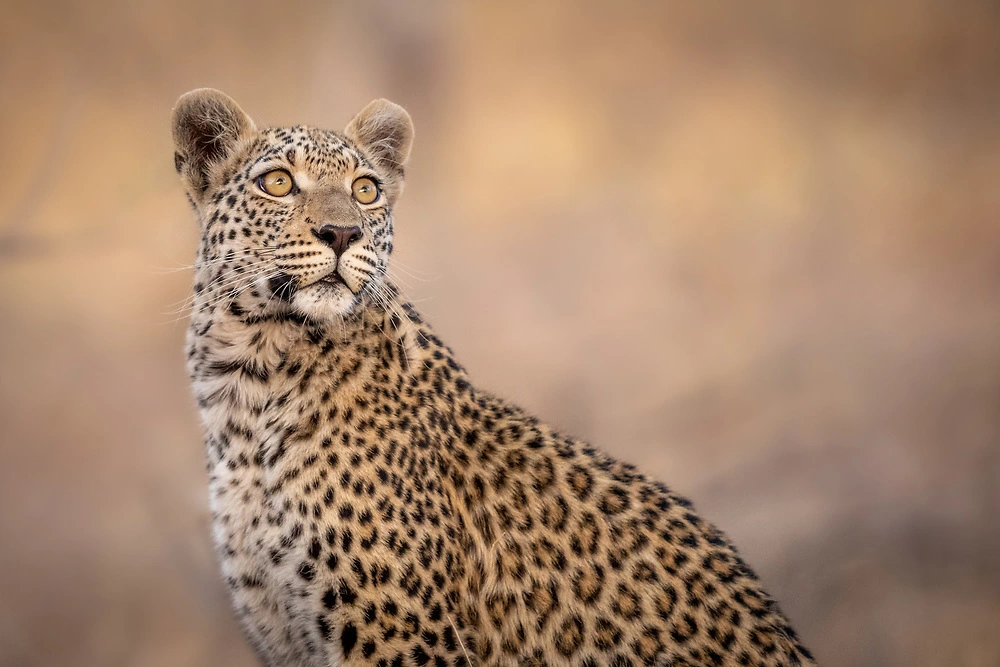
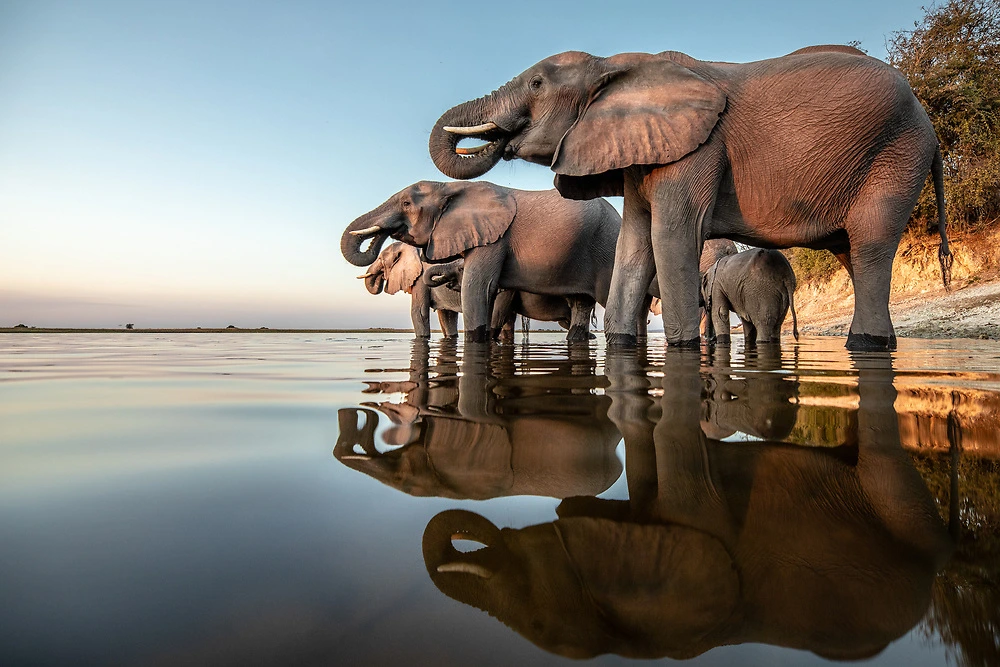
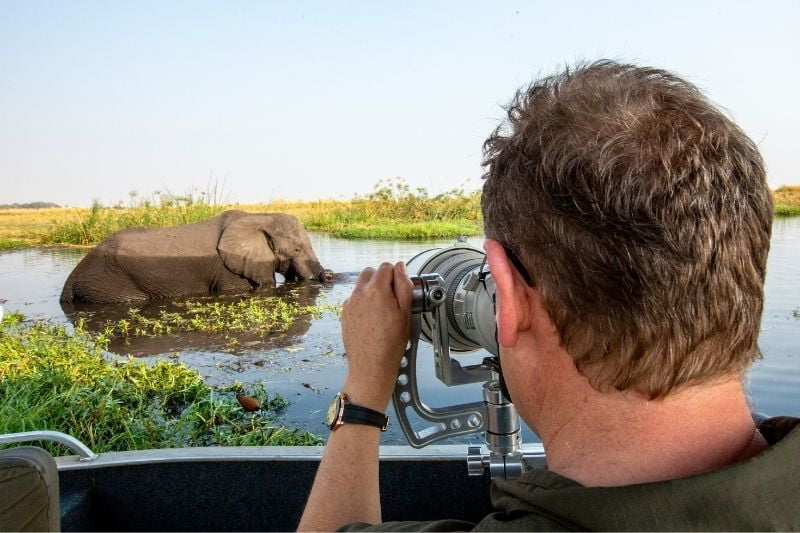
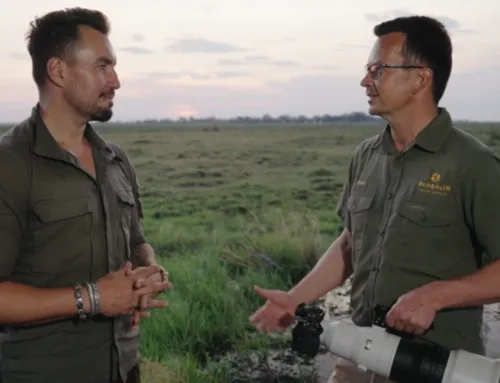
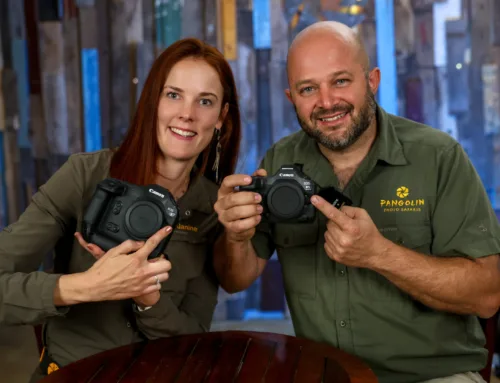
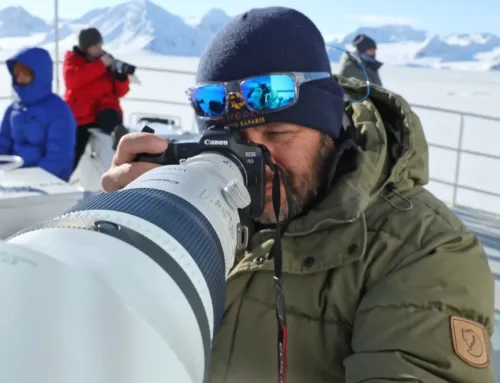
Leave A Comment
You must be logged in to post a comment.